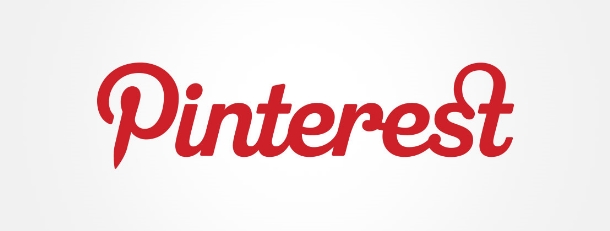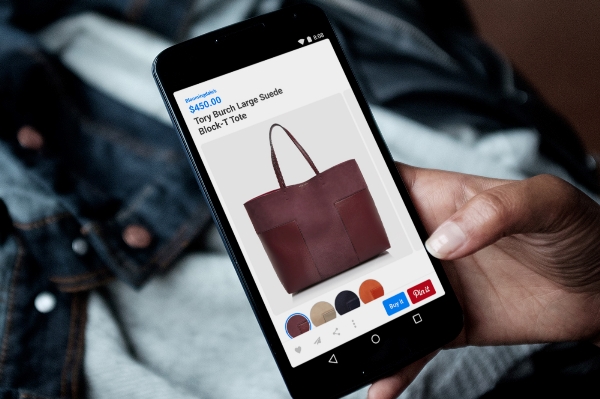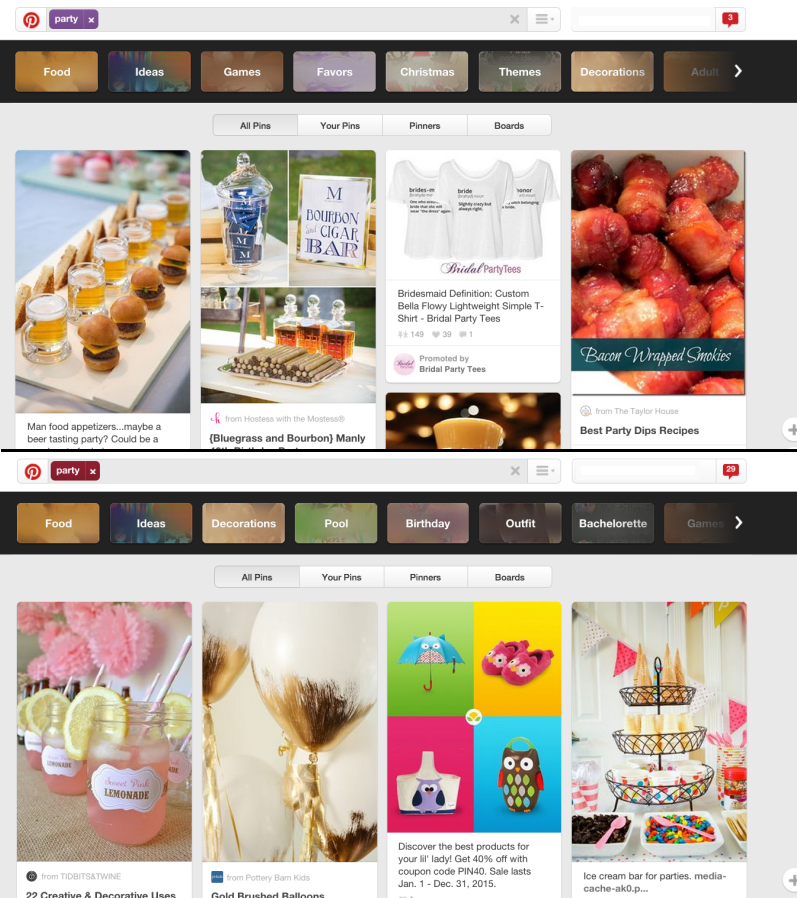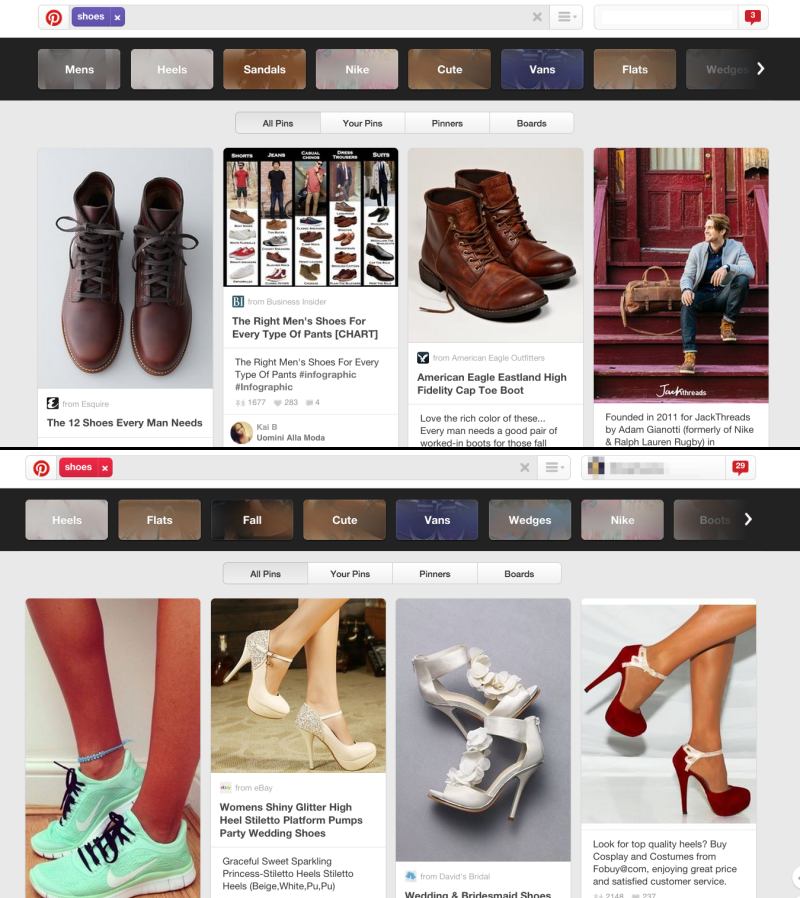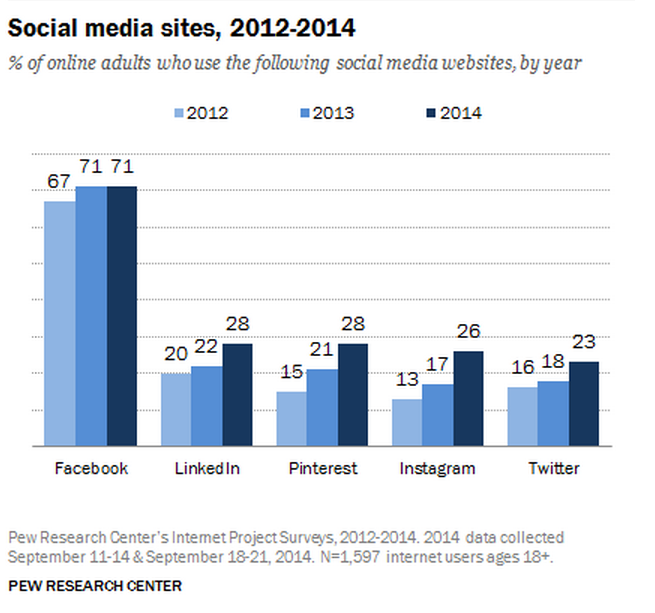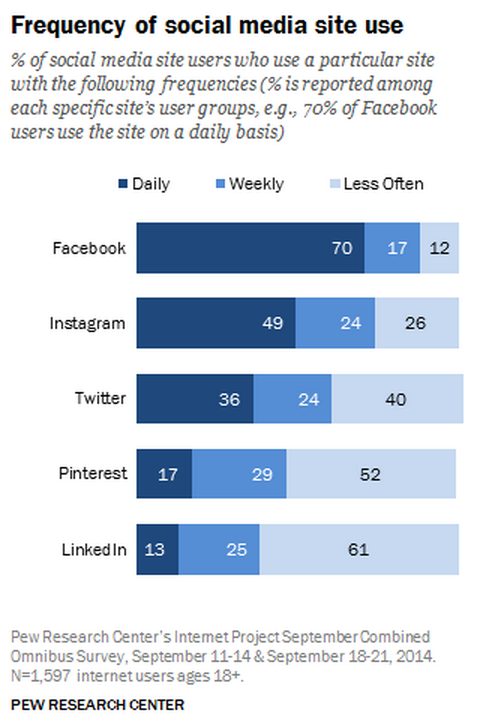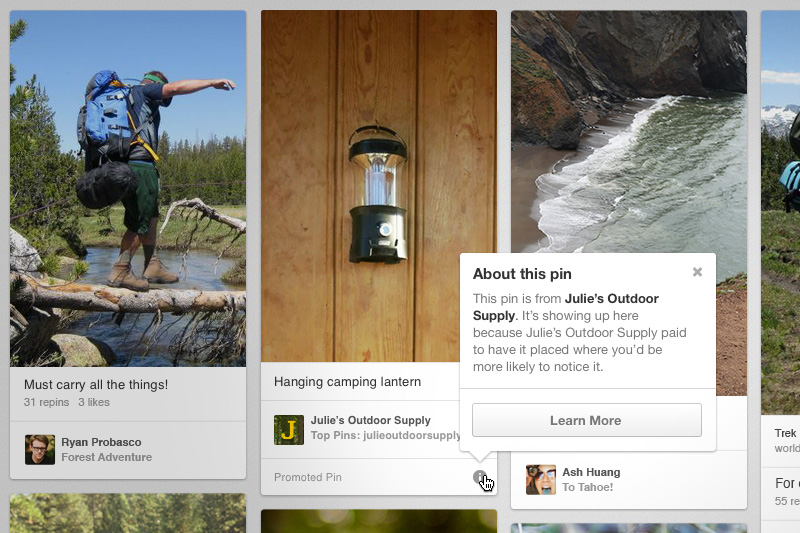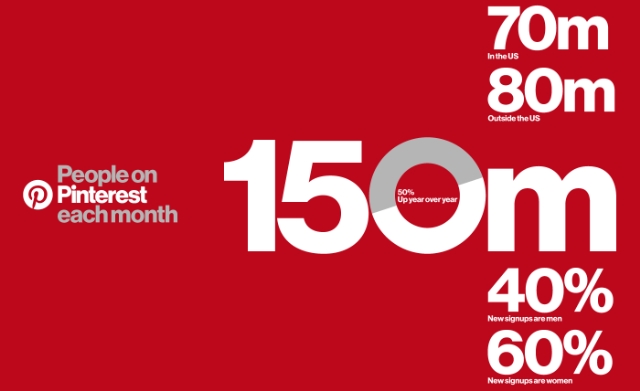
Just last year, Pinterest announced it had reached over 100 million active monthly users – a huge milestone for one of the fastest growing social platforms around.
Since then, Pinterest has grown its user base by over 50 percent, reaching 150 million active monthly users, according to a recent announcement.
The new numbers show Pinterest is maintaining its rapid growth by expanding internationally, as well as reaching out to new demographics at home.
According to Pinterest’s announcement, approximately 80 million of the company’s active users live outside the U.S. and 75% of new signups are coming from users outside the country.
The platform has also made gains with men, who have long been the minority on Pinterest. The company notes 40% of new users are men, an increase of 70% from last year.
Lastly, the statement shows Pinterest is still maintaining a strong hold on millennials. The company says over half of all U.S. millennials are now active users on the site.
Overall, the numbers show Pinterest is still drawing a huge audience of people interested in finding and engaging with products, food, and designs that help them live the lifestyle they dream of.
To find out more about Pinterest’s current user statistics, check out the announcement here.

